What Wine With Black Bean Sauce Beef
Beef with black bean sauce is a delicious, classic combination you'll find on Chinese and Chinese American restaurant menus across the U.S. It's quick and easy to make, using an ingredient that many of you have asked us about over the years—jarred black bean and garlic sauce!
While we often use whole fermented black beans in our cooking, a prepared sauce makes dinner prep that much more convenient. So if you're looking to try black bean sauce but aren't quite ready to buy a big bag of fermented black beans, give this recipe a go!
Like many of our recipes, this one is flexible. You could apply this same cooking method to other proteins—pork, chicken, or pan-fried tofu—and adjust the recipe to meet the taste preferences of your family, or what you happen to have on hand.
Note: We partnered with Lee Kum Kee to bring you this Beef with Black Bean Sauce! As always on The Woks of Life, our opinions are our own. Enjoy!
What is Black Bean Sauce?
Chinese fermented black bean sauce is a unique and flavorful ingredient. Packed with salt and umami, one of my dad's high school teachers described it this way: "Either you love it or you hate it – there is nothing in between."
That description largely arises from the fermented flavor of the black bean, known as dòuchǐ in Mandarin or dau-see in Cantonese (豆豉). It is a key ingredient in a well known dim sum dish, Steamed Spareribs with Black Bean Sauce.
That said, we'd guess that a lot more people love it than hate it! That fermentation process creates umami, the savory fifth taste and "essence of deliciousness" that we strive for in many dishes.
(Read more about prepared black bean and garlic sauce here.)
Why use fermented black bean sauce instead of whole fermented black beans?
Use whole fermented black beans when you want to accentuate a dish with the flavor of individual black beans. The effect is basically contrast.
Biting into a fermented black bean immediately gives the palate a shot of umami and salt as a counterpoint to the rich flavors of meat or the freshness of vegetables.
Hunan cuisine uses whole black beans in many dishes, like our Hunan Steamed Fish with Salted Chilies, Hunan Beef, or Hunan Pork and Tofu. Examples of Cantonese dishes with whole fermented black beans include dim sum dishes like Steamed Spareribs with Black Bean or Chinese Stuffed Peppers.
However, in some saucy dishes, where you want the flavor of fermented black beans more distributed throughout the dish, fermented black bean sauce from the jar works very well.
Sauce from the jar is super convenient, stores for a long time in the fridge, and is so easy to use. Adding a small amount to any dish will add a hidden boost of umami flavor without overpowering other ingredients.
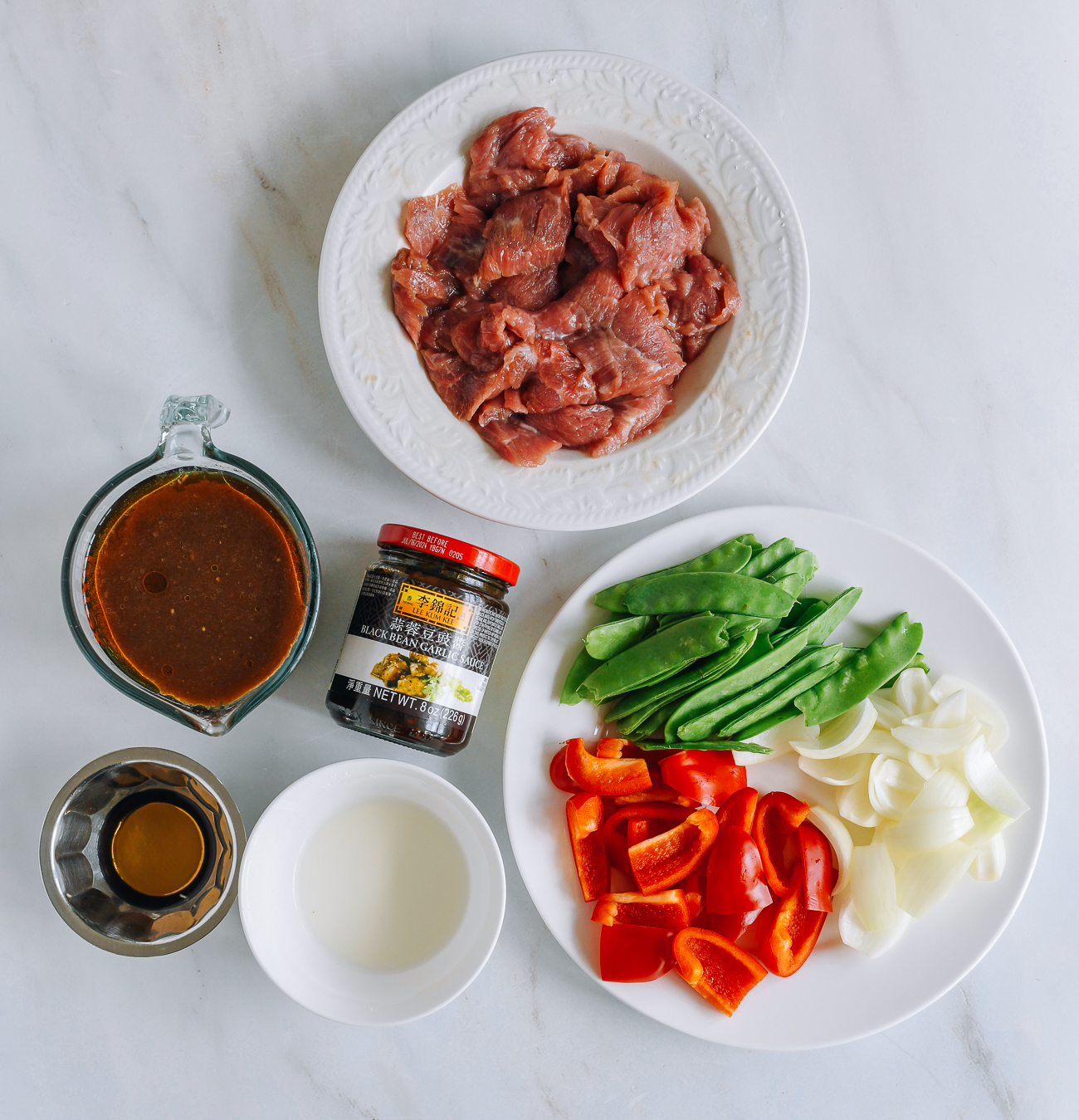
That said, if you'd like to see the black bean in the dish, you can feel free to add some additional whole beans if you like.
Just keep salt levels in mind—you can also rinse some of the salt off of the whole beans. Both ingredients can be quite salty. Anytime you're experimenting with black bean garlic sauce, start with a small amount. Taste as you go, since you may not need to add additional salt, soy sauce, or other salty elements.
As for where to get black bean and garlic sauce, you'll find it in Chinese grocery stores and in some well-stocked supermarkets.
Lee Kum Kee black bean and garlic sauce is probably the most ubiquitous, and it's what we use. Black bean and garlic are often paired together. With both ingredients in one sauce, there's no need to peel and chop garlic!
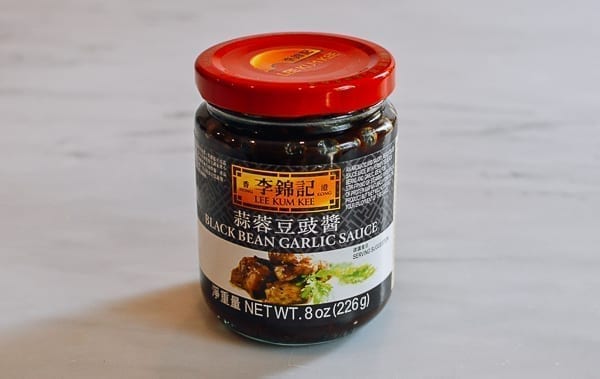
Ok, let's get to the recipe.
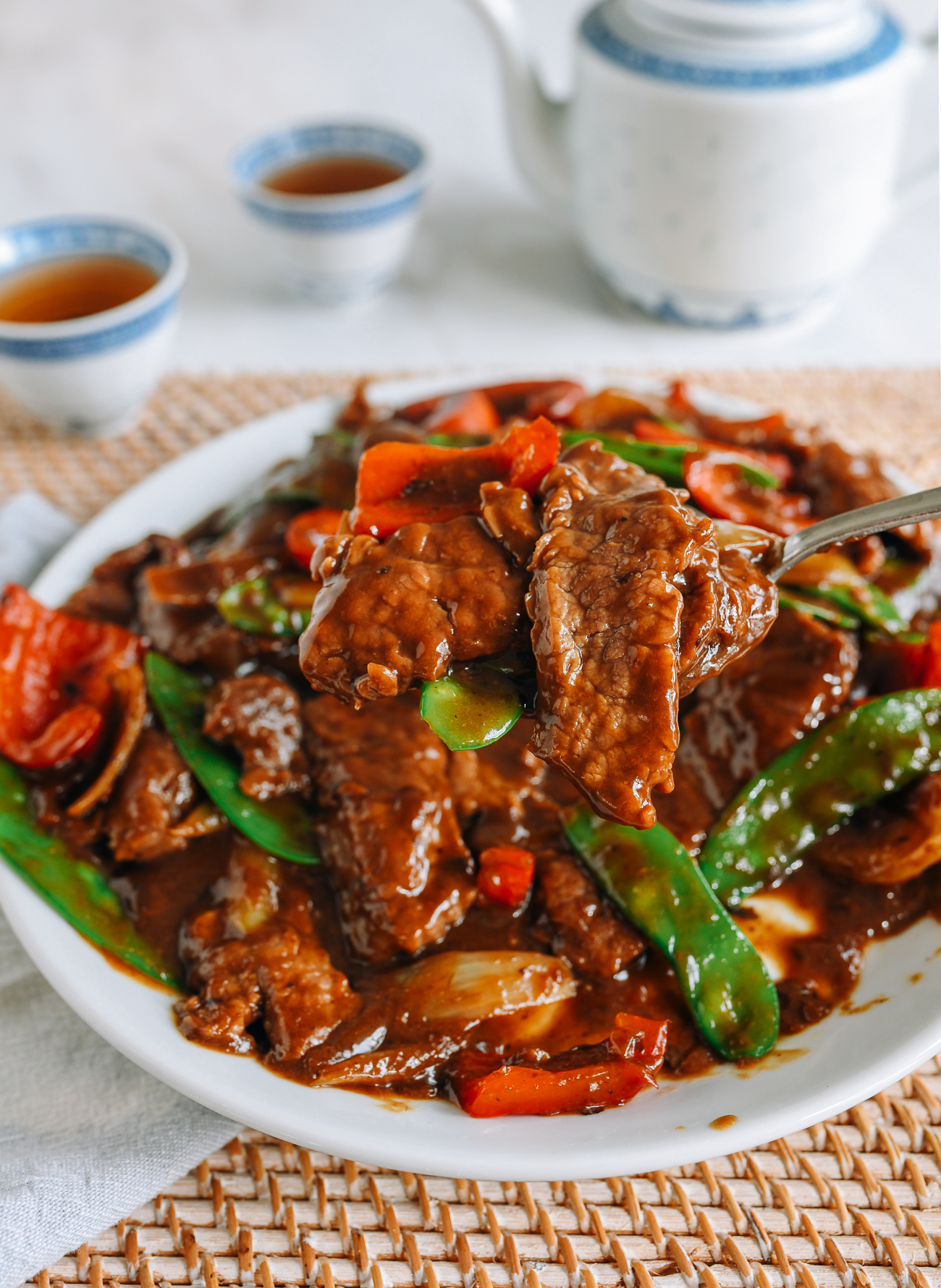
Recipe Instructions
In a medium bowl, add the beef, baking soda, and water to start the beef velveting process. Massage the beef with your hands until most of the liquid is absorbed. Let stand for 1 to 2 hours. (Less time for more tender beef, or longer for a tougher cut like chuck.) Then rinse the beef thoroughly under running water until the water runs clear. Drain. This step tenderizes the meat before marinating.
Then add the cornstarch, vegetable oil, oyster sauce, and Shaoxing wine. Mix well and marinate the beef for at least 30 minutes, or overnight if you'd like to make this ahead.
In a liquid measuring cup, mix together the stock, black bean garlic sauce, oyster sauce, dark soy sauce, sesame oil, sugar, and white pepper, and set aside.
Heat your wok over high heat until it starts to smoke lightly. Add 1 tablespoon of oil around the perimeter of the wok. Add the beef in 1 layer. Sear the beef on both sides until browned, about 2-3 minutes. Turn off the heat, remove the beef from the wok, and set aside.
Reduce the heat to medium-high, and add the remaining 1 tablespoon of oil, onions, and bell peppers. Stir-fry for 30 seconds, until the onions and peppers have very light sear on them. Next, add the Shaoxing wine to deglaze the wok.
Stir in the sauce mixture you made earlier.
Bring to a simmer, and add the beef (along with any juices) back to the wok. Stir it in, then add the snow peas.
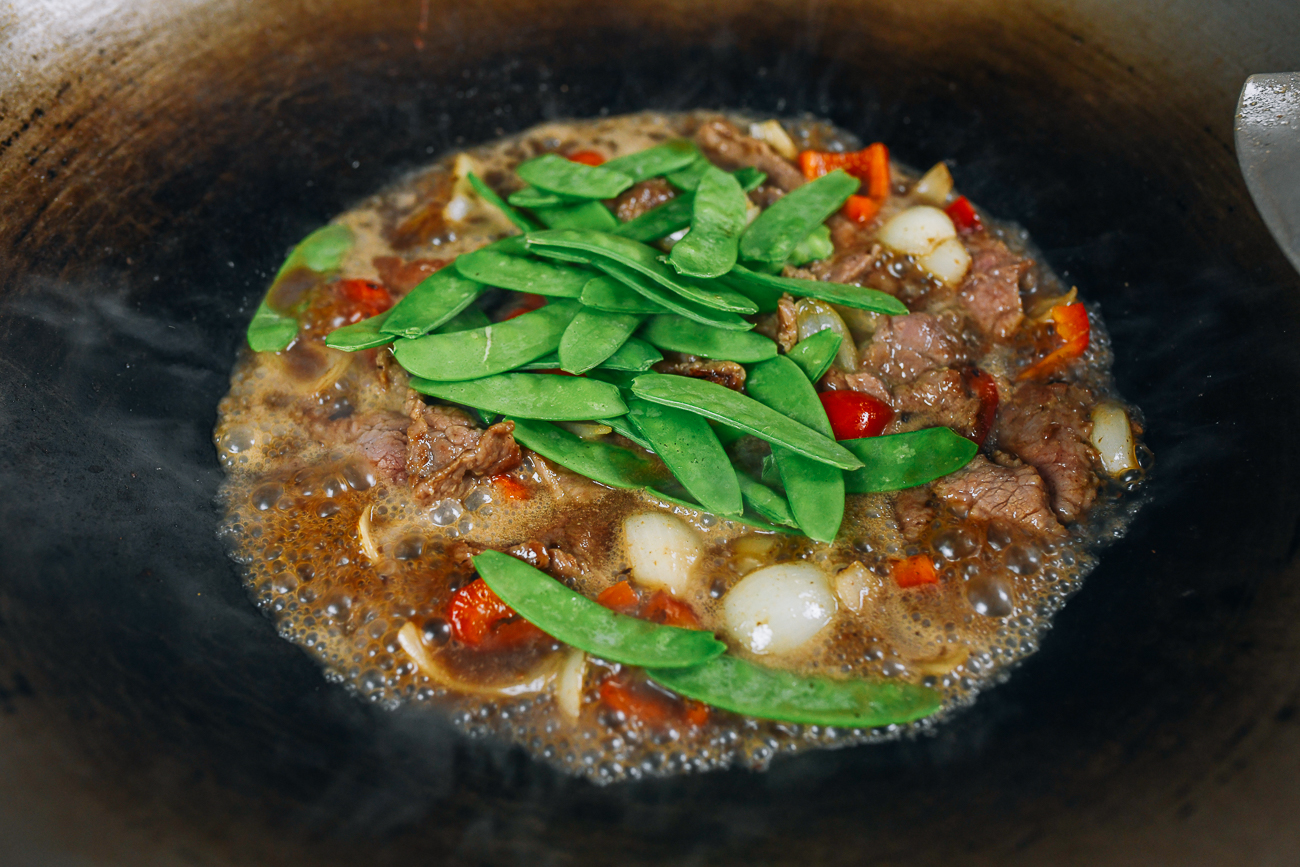
Bring the contents of the wok to a simmer. Stir the cornstarch and water until incorporated into a slurry, and gradually add the cornstarch slurry to the sauce, stirring constantly.
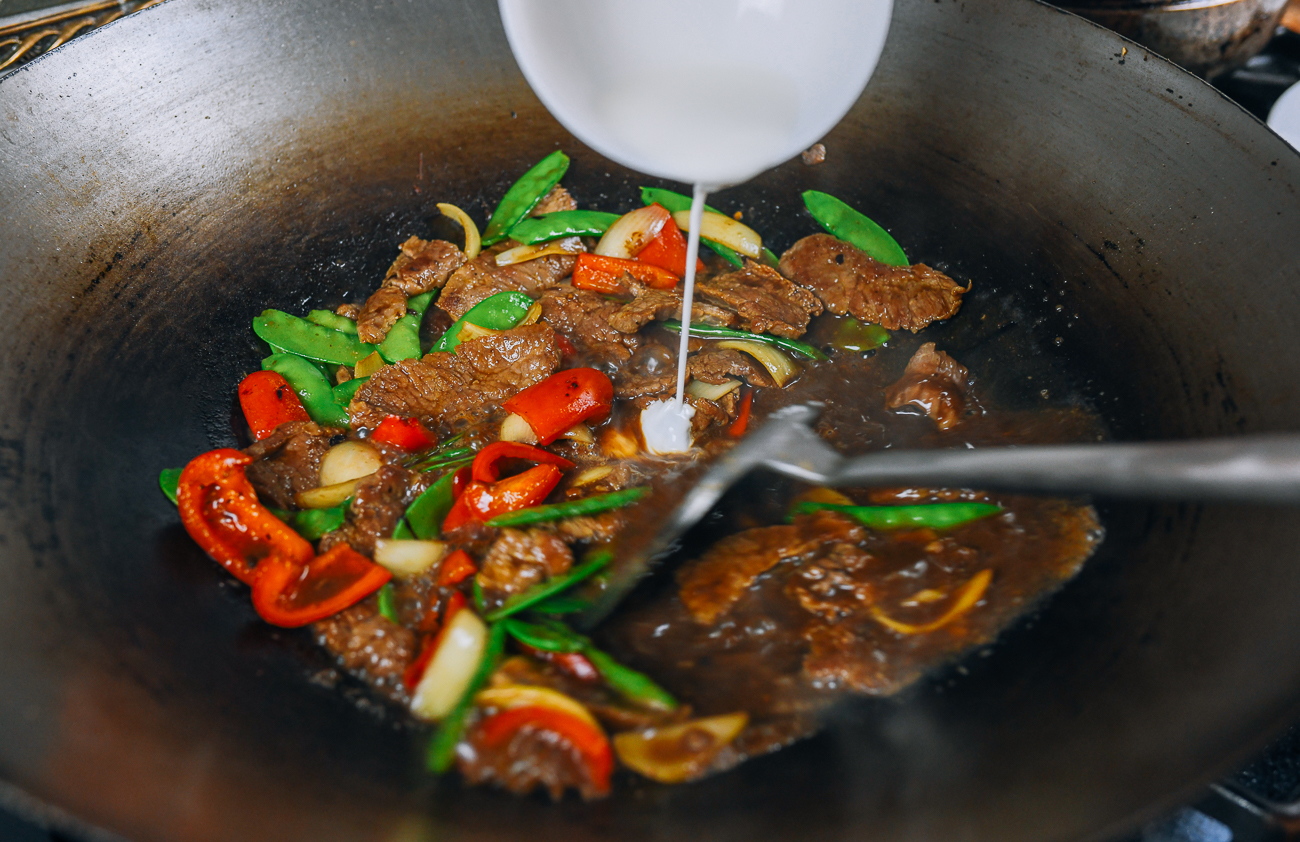
Simmer until the sauce is thickened to your liking. (If it's too thick, add a splash of water or stock.) The snow peas should be just crisp-tender.
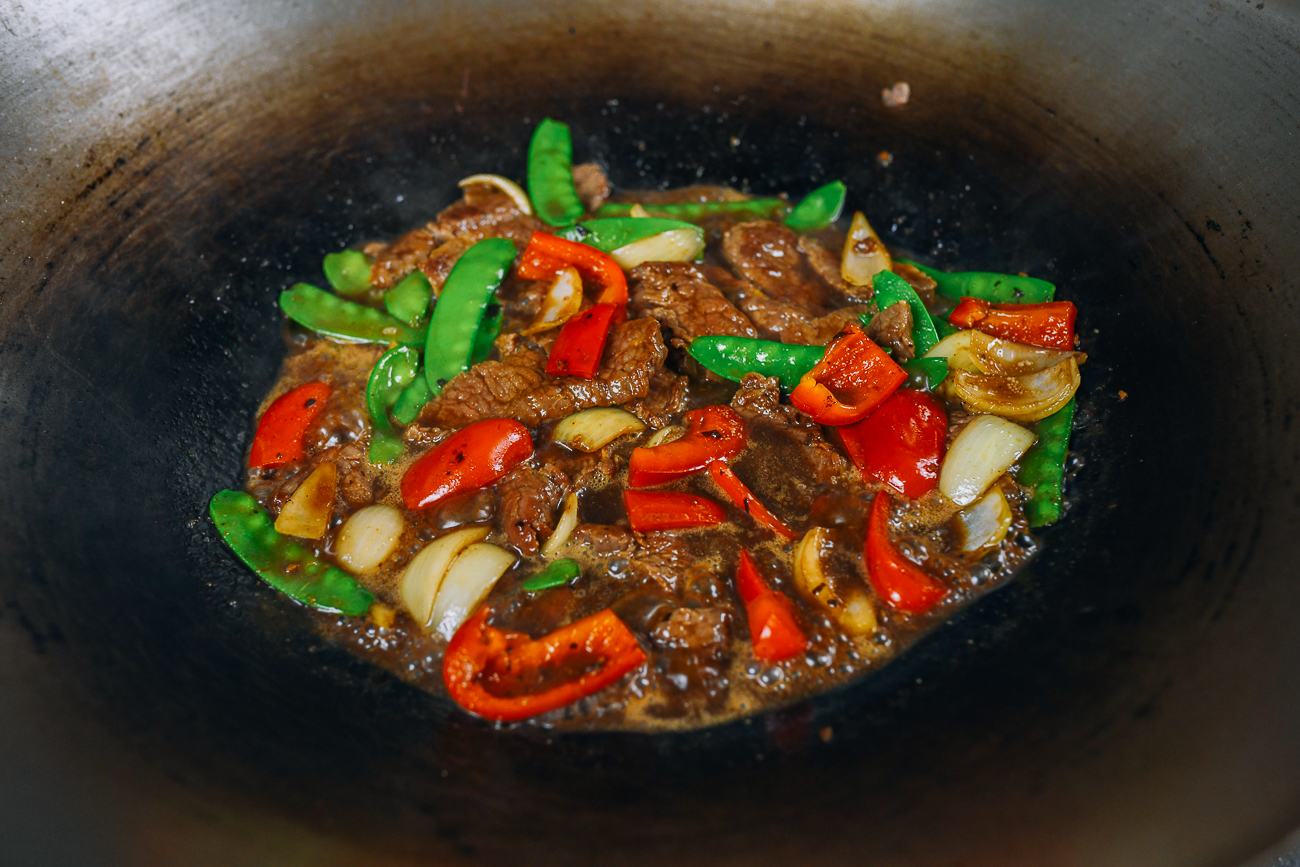
Serve immediately with steamed rice!
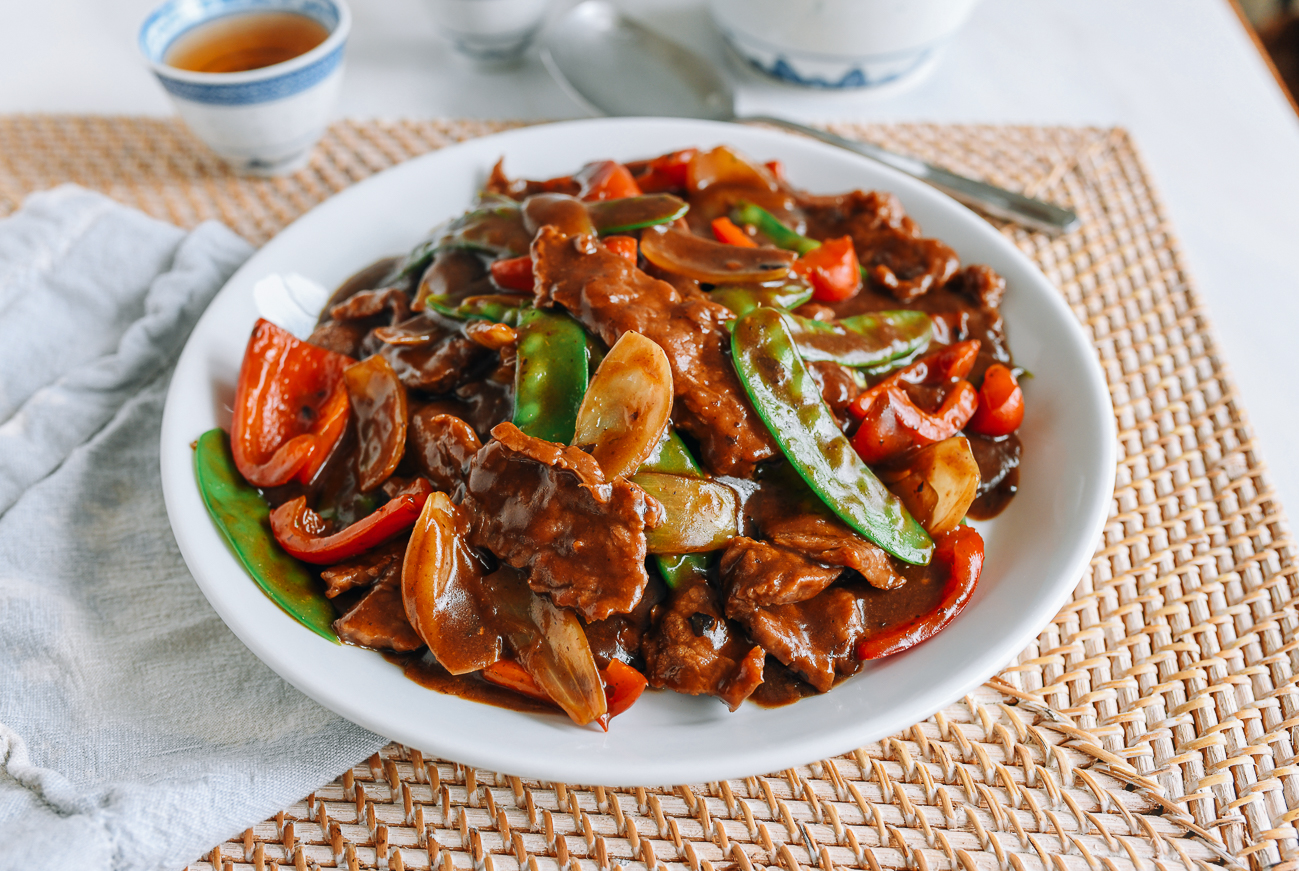
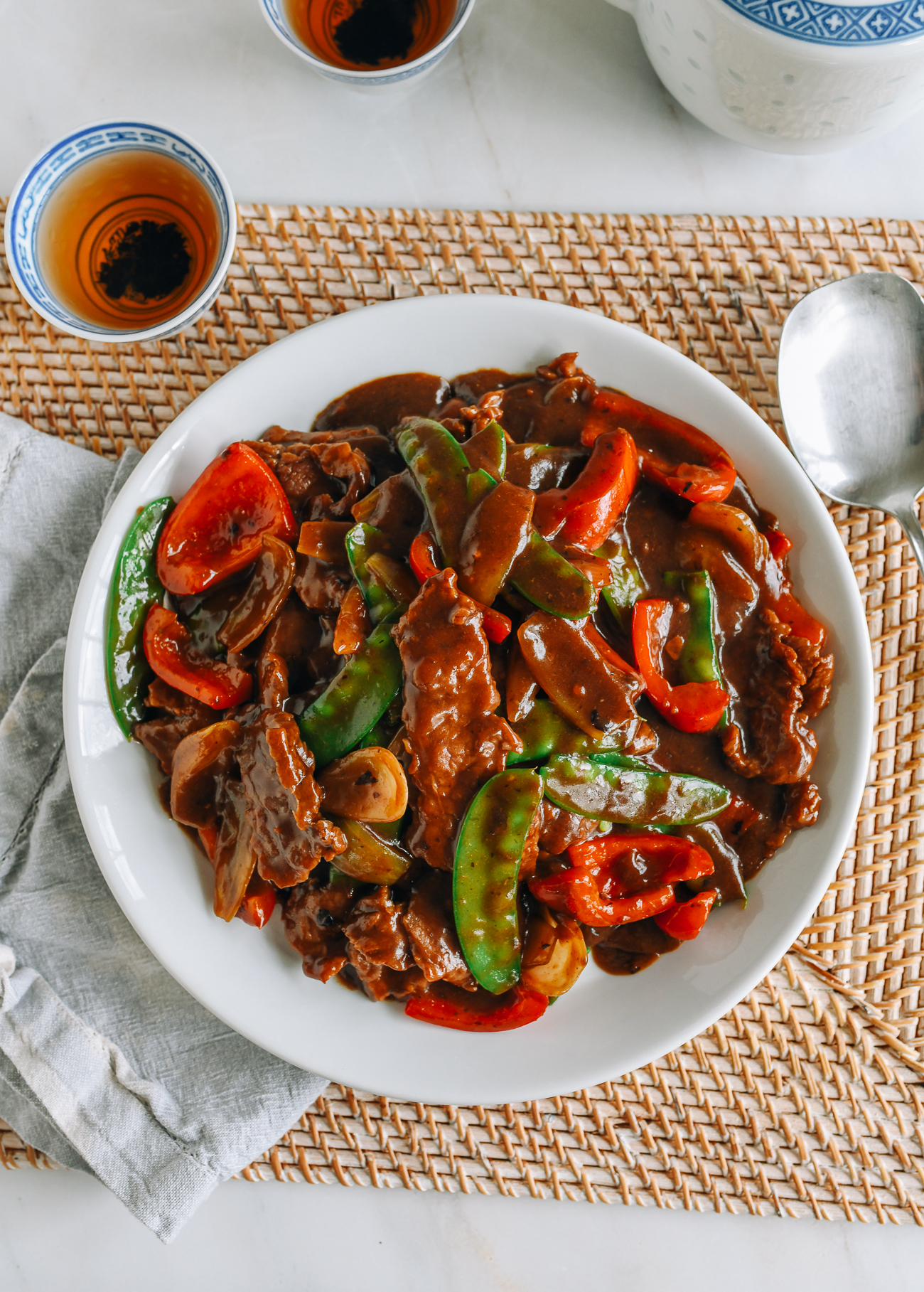
Prep: 1 hour 20 minutes
Cook: 10 minutes
Total: 1 hour 30 minutes
For velveting the beef:
- 1 pound beef flank steak or beef chuck (thinly sliced against the grain)
- 1 teaspoon baking soda
- 1/4 cup water
- 2 teaspoons cornstarch
- 2 teaspoons vegetable oil
- 2 teaspoons oyster sauce
- 1 teaspoon Shaoxing wine
-
In a medium bowl, add the beef, baking soda, and water. Massage the beef with your hands until most of the liquid is absorbed. Let stand for 1 to 2 hours (less time for more tender beef, or longer for a tougher cut like chuck). Then rinse the beef thoroughly under running water until the water runs clear. Drain. This step tenderizes the meat before marinating.
-
Then add the cornstarch, vegetable oil, oyster sauce, and Shaoxing wine. Mix well and marinate the beef for at least 30 minutes, or even overnight if you'd like to make this ahead.
-
In a liquid measuring cup, mix together the stock, black bean garlic sauce, oyster sauce, dark soy sauce, sesame oil, sugar, and white pepper, and set aside.
-
Heat your wok over high heat until it starts to smoke lightly. Add 1 tablespoon of oil around the perimeter of the wok. Add the beef in 1 layer, and sear the beef on both sides until browned (this should only take 2-3 minutes). Turn off the heat, remove the beef from the wok, and set aside.
-
Reduce the heat to medium-high, and add the remaining 1 tablespoon of oil, onions, and bell peppers. Stir-fry for 30 seconds, until the onions and peppers have very light sear on them. Next, add the Shaoxing wine to deglaze the wok.
-
Stir in the sauce mixture you made earlier. Bring to a simmer, and add the beef (along with any juices) back to the wok. Stir it in, then add the snow peas.
-
Bring the contents of the wok to a simmer. Stir the cornstarch and water until incorporated into a slurry, and gradually add the slurry to the sauce, stirring constantly until the sauce is thickened to your liking (if it's too thick, add a splash of water or stock; if it's too thin, add more slurry). Cook until the snow peas are just crisp-tender. Serve immediately with steamed rice!
Prep time includes inactive marinating time! Actual active prep is about 20 minutes.
Calories: 313 kcal (16%) Carbohydrates: 13 g (4%) Protein: 28 g (56%) Fat: 16 g (25%) Saturated Fat: 3 g (15%) Polyunsaturated Fat: 3 g Monounsaturated Fat: 8 g Trans Fat: 1 g Cholesterol: 68 mg (23%) Sodium: 923 mg (38%) Potassium: 740 mg (21%) Fiber: 2 g (8%) Sugar: 5 g (6%) Vitamin A: 1433 IU (29%) Vitamin C: 64 mg (78%) Calcium: 47 mg (5%) Iron: 3 mg (17%)
Source: https://thewoksoflife.com/beef-black-bean-sauce/
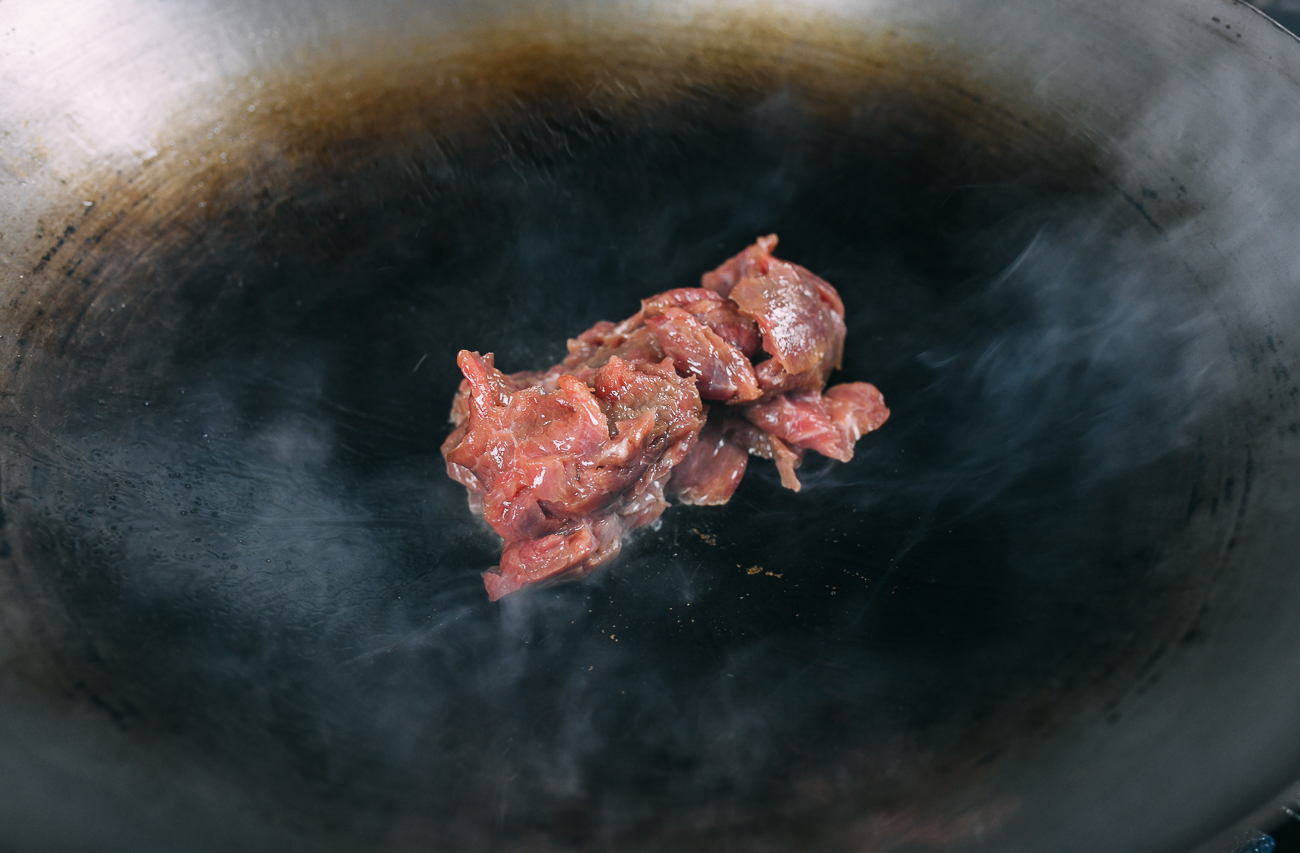
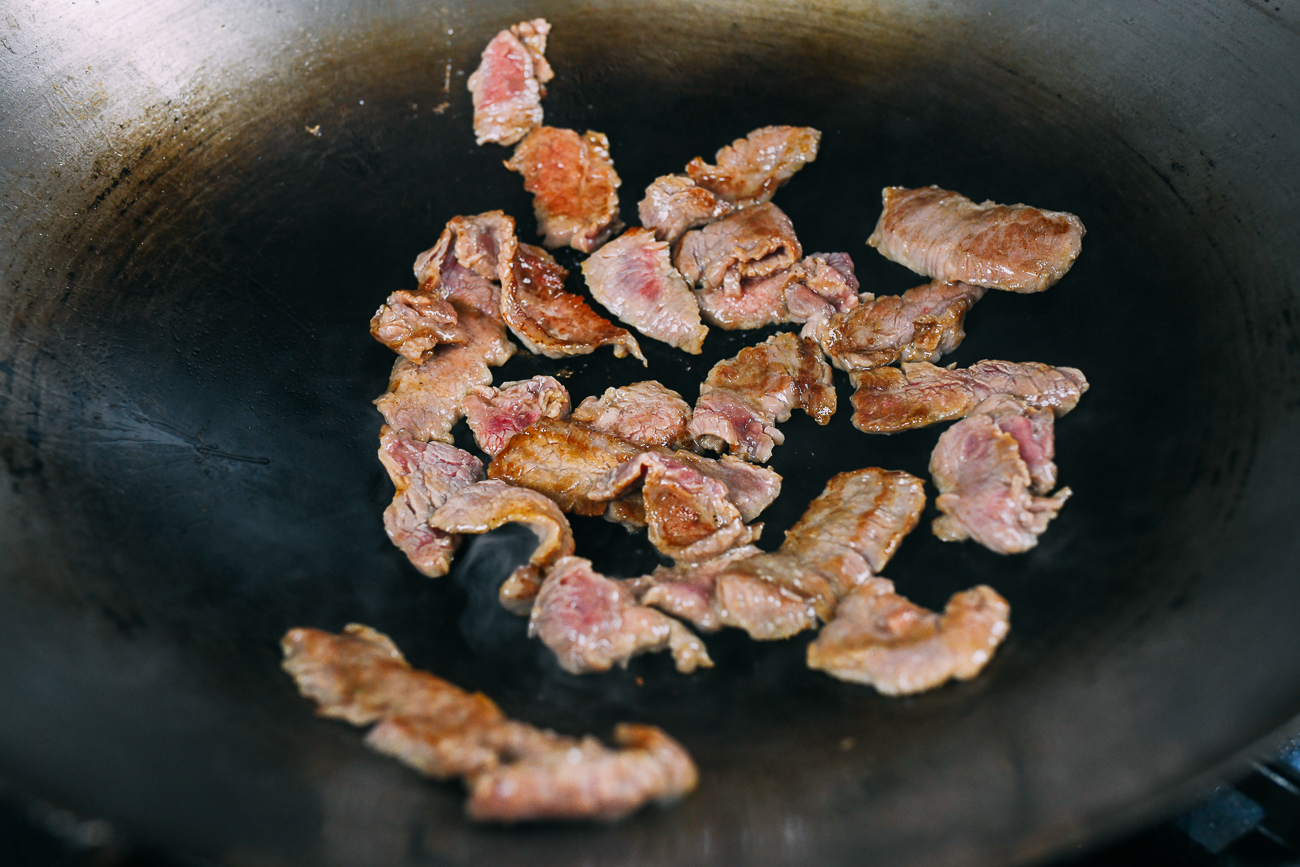
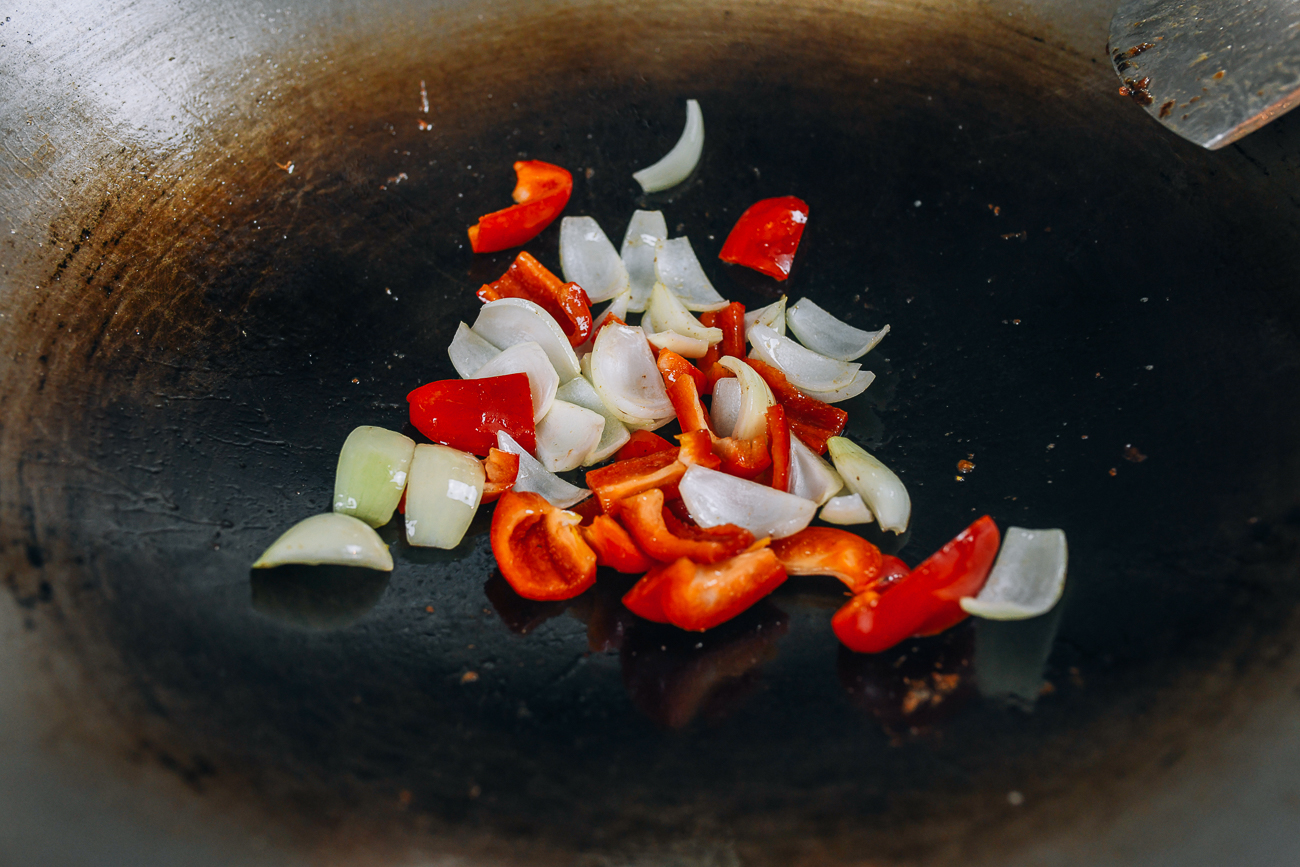
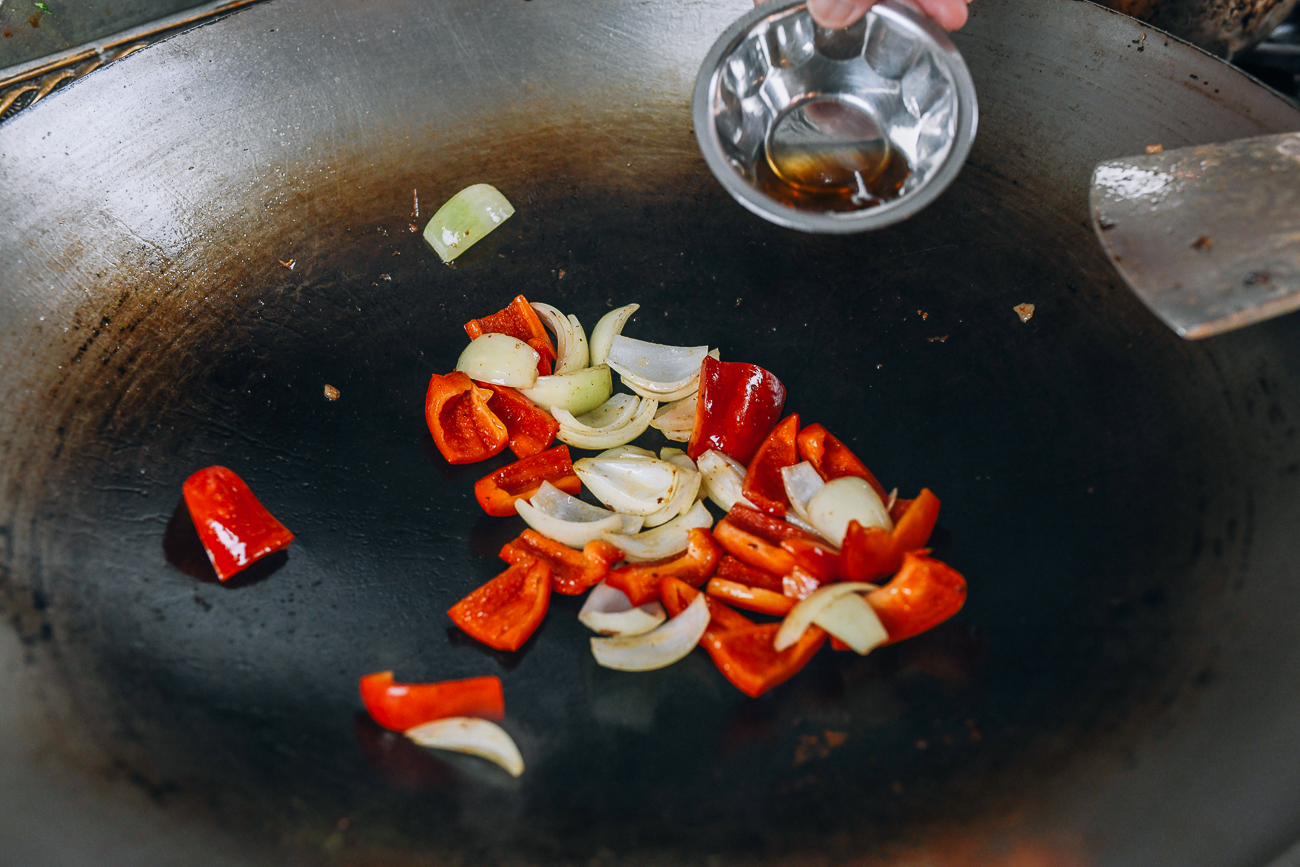
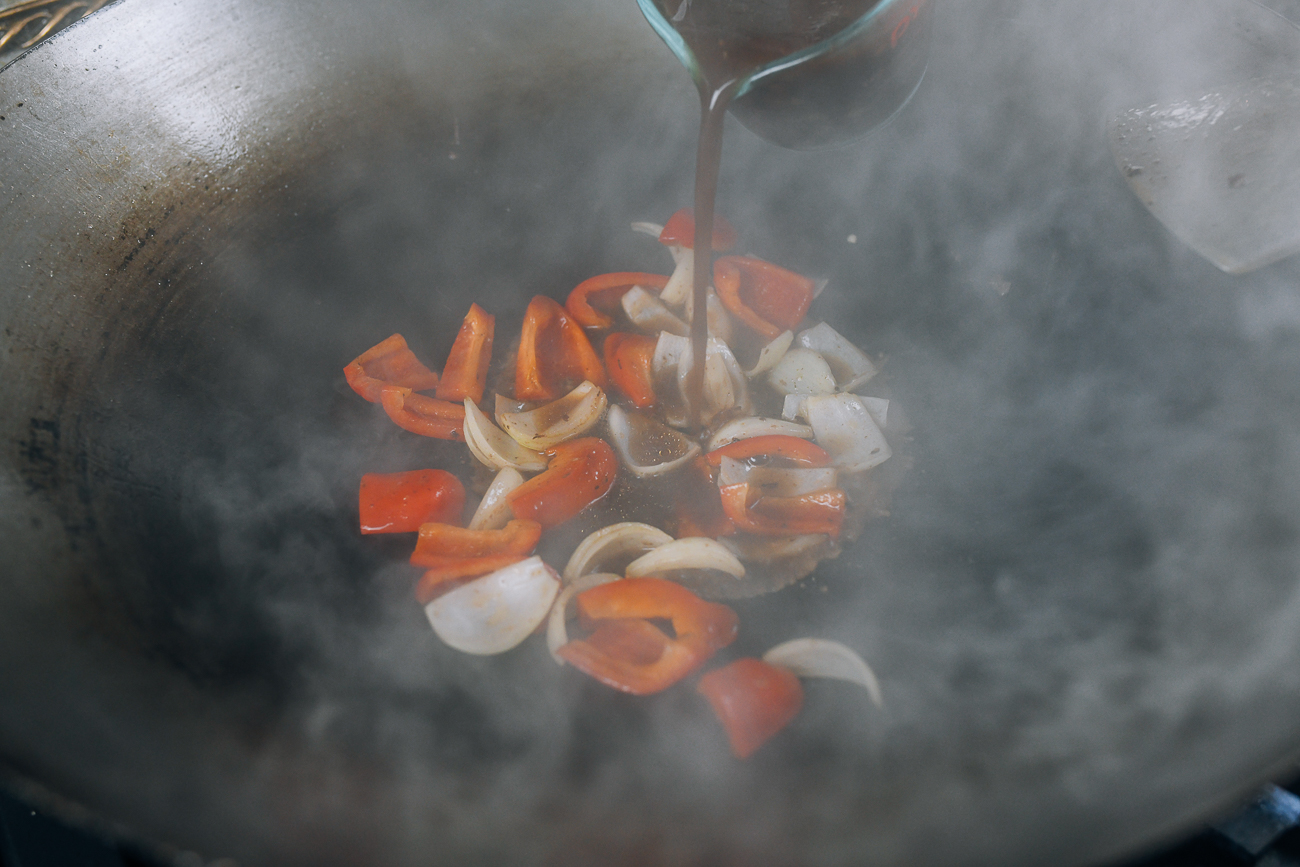
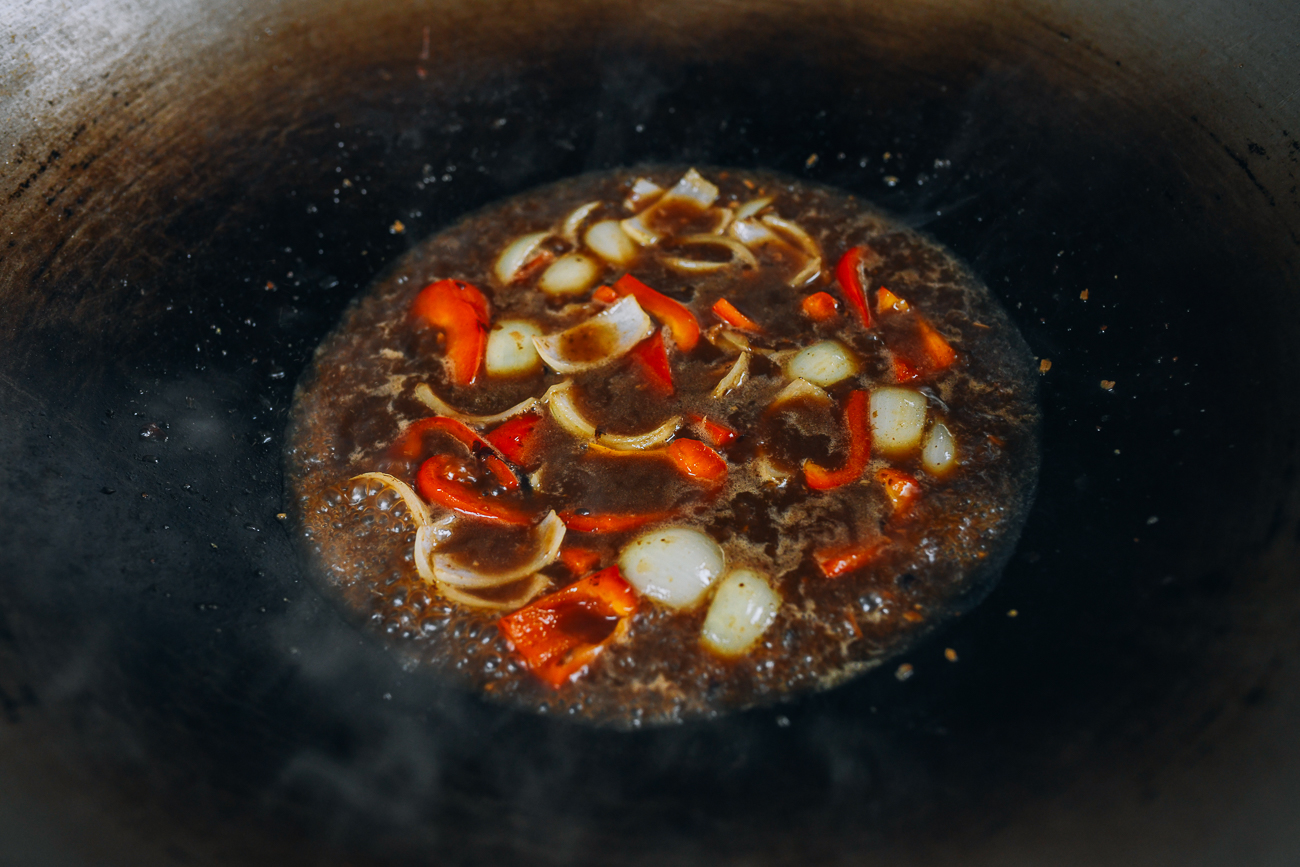
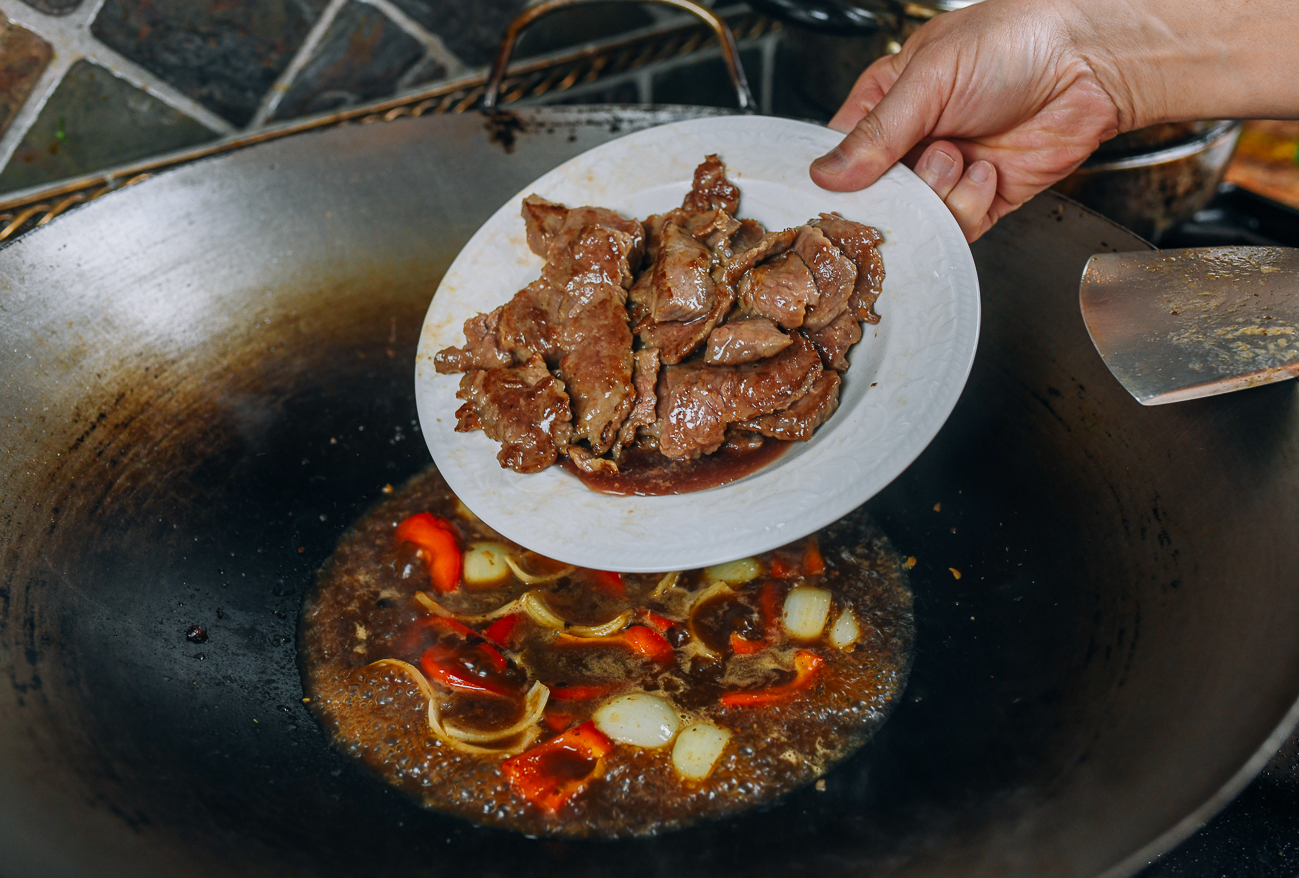
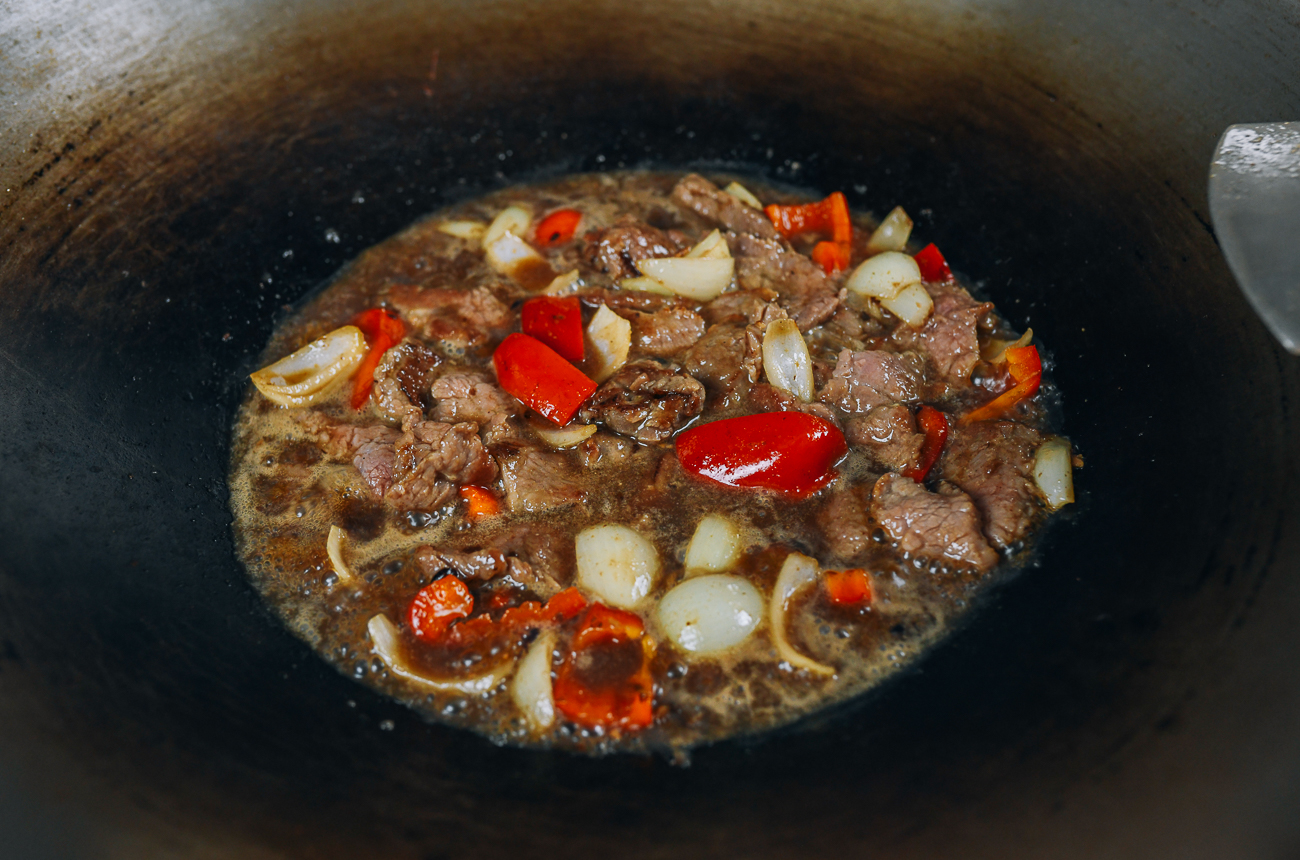
0 Response to "What Wine With Black Bean Sauce Beef"
Postar um comentário